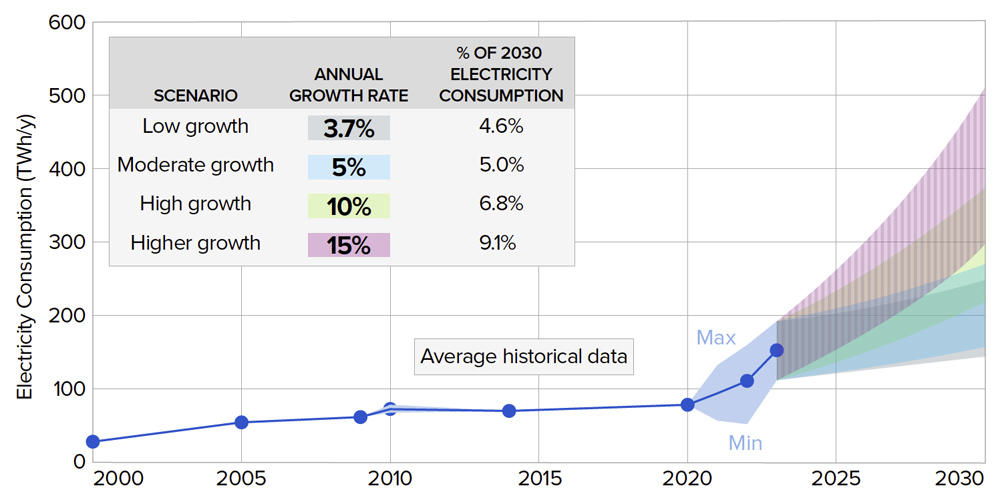RTO Insider co-founder and Chief Operating Officer Meredith (“Merry”) Eisner-Heidorn, whose passion for children, public education and Philadelphia sports left a mark on all who knew her, died in Baltimore on May 28, just two months after learning she had lung cancer. She was 66.
Among Merry’s survivors are her husband and RTO Insider co-founder Rich Heidorn Jr., her twin sons, Zach and Ben, 25, and her beloved dog, Daisy.
Rich and Merry got married in their living room in February 2013, a month after Rich got laid off from Bloomberg Government. Merry had been laid off from a job months before. “We figured we’d get the ‘for poorer’ part taken care of upfront,” Rich said.
Merry, who had a background in marketing and database design, and Rich, a former FERC staffer and journalist, published the first issue of what was originally called PJM Insider in March 2013. The pair grew the company without any outside funding, expanding from PJM to the six other RTOs and ISOs in the U.S. and adding two new publications, ERO Insider in 2019 and NetZero Insider in 2021.
Merry never considered herself a salesperson, but she filled that role for the first three years of the company. “I always said that without her, I’d have only two subscribers — and one of them would be my mother!” Rich said.
Merry “raised two amazing sons, helped create and grow a successful business, and shared a special union with her husband, Rich Heidorn,” said Merry’s younger brother, Randy. “Merry was tenacious and passionate, and her passing leaves a giant void for all those whose lives she touched.”
Early Years
Meredith Baer Goldner was born in Philadelphia on Sept. 9, 1957, learning to walk in Rittenhouse Square. Her father was an architect, and her mother was a homemaker.
Merry had a rebellious streak, the product of a tumultuous home life after her parents divorced.
In 1969, not yet 12, she and a friend conspired to travel from Philadelphia to the Woodstock Music and Art Fair, each telling their mother that she was staying the weekend at the other’s house. She recalled dodging photographers to avoid leaving any evidence of her presence.
She loved live music and spent many evenings at the famed Main Point in Bryn Mawr, Pa., a small coffeehouse venue where she saw numerous acts who later went on to great fame. One night, she said, singer Jackson Browne tried to pick her up on her way to the restroom.
Career
Merry graduated from the University of Pennsylvania in 1980 with a degree in nonprofit marketing and moved to Chicago, where she worked with the famed Steppenwolf Theater Co.
Later, she joined the media department of the large Chicago advertising firm now known as D’Arcy Masius Benton & Bowles. She moved later to a small, boutique ad firm in Baltimore, and then on to New York City, where she conducted marketing and media research for outdoor media at TDI Winston.
She devoted the next stage of her career to evangelizing about the most efficient and effective ways to reach customers, developing metrics used to purchase and validate media audiences and advertising.
In 1990, she became senior vice president in the MicroMarket Strategies Division of advertising agency Earle Palmer Brown Co., based in Bethesda, Md. In that role she launched the frequent traveler program for USAir.
From 1992 to 2000, she was a co-owner of Strategic Insights Inc., a marketing consulting company that built relationship marketing programs. Its clients included Carnation, Heinz, Mobil Oil and Western Union.
Education Advocacy
After giving birth to Zach and Ben in 1998, Merry was a stay-at-home mom, active in the parent-teacher association at her sons’ school in Potomac, Md.
She served as vice president of legislation for the Maryland PTA in 2009-2010, and in 2012 as policy chair of the Montgomery County chapter of Start School Later Inc., an organization dedicated to increasing public awareness about the relationship between sleep and school hours. She also was a member of steering groups dealing with math education in Montgomery County schools.
She provided story tips to Washington Post education reporter Donna St. George, who remembered her as “so spirited and funny and caring.”
Politics
As her sons grew, she went to work in the Maryland legislature, serving as legislative director to Del. Saqib Ali and later Del. Sam Arora, from 2008 to 2011. She also managed Del. Al Carr’s 2012 campaign.
In 2014, she ran unsuccessfully for the Montgomery County Board of Education on a campaign to increase the district’s transparency and teachers’ planning time.
“She was a force of nature and someone who left an indelible mark on the lives of everyone who was lucky enough to be in her orbit,” said Arora.
Former Wall Street Journal personal technology columnist Walt Mossberg, Merry’s neighbor in Potomac, called her “an extraordinary person — smart, focused, but never too busy to be kind and friendly.” He lamented her death, saying, “Who will I call now to know how to vote in down-ballot races?”
Marriages
In 1983, at age 25, she had what she would later term a “starter” marriage to Hugh M. Jones. She said she knew within a month of the wedding that it was a mistake. They divorced in 1985.
Her marriage to Oren D. Eisner, the father of her sons, also ended in divorce.
She met Rich in Maryland in the fall of 2009, the two bonding as parents of twins and as Philadelphia sports fans commiserating over the Phillies’ loss to the Yankees in the World Series. Merry treated Rich’s three children as her own, creating the “blended family” she promised at their wedding. She loved introducing herself and her husband with a mnemonic device: “We’re Rich and Merry!”
Love of Children
Merry’s love for her sons was apparent to all who worked at RTO Insider, and she was delighted by her employees’ children. With workers scattered around the U.S., RTO Insider staffers meet regularly on video calls, bringing employees into each other’s’ homes, where their pets and children often appear in the background.
Deputy Editor Robert Mullin recalled that when Rich and Merry visited his home in Portland, Ore., in 2017, Merry asked if Robert’s 5-year-old son, Henry, would sit in her lap for a moment “so she could remember what it was like to hold a little boy.” Her own sons had graduated high school the previous year, and Merry was feeling some empty-nest pangs.
Robert’s wife, Christina, asked Merry for thoughts on raising Henry.
“I remember Merry offering a few pieces of advice, then pausing and saying, ‘Just enjoy him,’” Robert recalled. “Henry’s now an adolescent, and as parents we’ve been navigating the sometimes-tumultuous transition into the middle school period alongside him. During some of the more difficult moments, when I feel myself ready to dig in on my position, I’ve found myself thinking about what Merry said, letting go a little and approaching a situation with a sense of lightness and humor. It has really helped me — and Henry — through some challenges. I know I will always carry that part of her with me.”
Merry was always eager to see the drawings that NERC correspondent Holden Mann’s son, Robin, displayed at RTO Insider’s weekly staff meetings.
“My wife loved the sound of Merry’s voice in our meetings, and I know Robin will remember her kindness and interest in him,” Holden said.
Nicole Hopson, a recent addition to the RTO Insider marketing team, said her job interview with Merry was what made her say, “I want to work here.” They talked for 45 minutes about having sons, “and you could tell that her life is her kids. She’s so relatable, and I’ve never felt more understood by someone I just met for the first time.”
Merry was both den mother and disciplinarian at RTO Insider, telling staffers she expected strict adherence to deadlines.
Merry “was one of the main reasons I decided to join the company,” said CAISO correspondent Ayla Burnett. “I remember when her and I first spoke, I was struck by how strong, direct and badass she was, and I felt safe.”
“It seems so cliche to say this environment is like our extended family, but in this case, I truly feel like it couldn’t be more appropriate,” said Creative Director Mitchell Parizer. “But because of it, it’s making it that much harder to digest this news” of her death.
“She has taught me much, and has easily been one of the most influential people in my life, as well as put food on my young family’s table. All this without ever meeting in person,” said Dan Ingold, director of sales and customer engagement. “Someone like Merry can’t help but leave a mark far and wide in this world.”
“I’ll also never forget the Yiddish word she taught me the first time we spoke [on video]: ‘bashert,’” he added. “She was describing our meeting and the prospect of my hiring, but the thing that sparked it was my dog, Louie, in the background yapping and sounding just like Daisy. I took it as her way of saying the relationship appears meant to be.”
Jobs for Journalists
In a time of widespread layoffs in the media industry, trade publications like RTO Insider have provided jobs that helped journalists preserve their careers. At the beginning, Rich and Merry were the only employees of the company, which would grow to a staff of 26. Even though Rich oversaw the reporters and editors, Merry insisted she interview and approve every hire.
Merry was “hands down the kindest, most generous, best boss I’ve ever had,” said MISO correspondent Amanda Durish Cook. “She is the primary reason I believed a writing career was still in the cards for me. She put all her faith in me from the first day, and I can’t put a price on that. It is an honor, and she is my role model. I can’t overstate this: She is a jewel, and I’ve never, never had a boss like her.”
Michael Brooks, now deputy editor, was one of the first staffers Rich and Merry hired. A University of Maryland College Park journalism graduate, he was then working as a waiter at Dave & Buster’s in North Bethesda, Md. — ironically, the spot where Rich and Merry had their third date to watch an Eagles game.
Michael took over the layout of the weekly newsletter for Merry, working from Rich and Merry’s home.
“Merry not only paid me for my work but also fed me lovely dinners, gave me a place to sleep during snowstorms and let me take Daisy for walks. I will never forget that,” Michael said.
Shawn McFarland — a production editor who also writes the sometimes snarky, sometimes heartwarming stories that top the daily RTO Insider email — was hired in late 2018. He had left a sports writing job in Pennsylvania after eight years to be with his eventual wife in Maryland.
After working for two weekly papers that closed, he was sweeping the floors of a beer distributor at 11 p.m. “It was a pretty low moment in my life,” he said. “Luck finally fell on my side when I got the job. It felt like [it] saved my pride, my sanity — maybe my marriage and family if I’d have continued to struggle financially.”
“I will always be grateful to Merry for giving me my first job,” said Tri Bui, sales coordinator. “Her infectious energy never failed to put a smile on my face.”
“Merry’s indomitable spirit has been the heart and soul of the company and her family. She has been a terrific friend and colleague to everyone,” said Ken Sands, senior vice president for editorial. “Her spirit will live on with all of us.”
“As she helped recruit and onboard me, Merry told me what to expect — basically, ‘You will do your best work to maintain the standards this company is known for, and I will give whatever tools you need to make that happen,” said John Cropley, NetZero Insider’s New York/New England bureau chief. “I think it was her sheer competence, determination and confidence as much as her irrepressible good nature that made us all like, love, respect and appreciate her.”
As news of Merry’s passing spread, tributes rolled in from the industry. “Those of us who follow ISO/RTO goings-on subscribe to RTO Insider for Rich and his team’s invaluable insights — but also got to interact with the lovely Merry Eisner-Heidorn, who brought sunshine and light to every chat, no matter how brief,” said attorney Ruta Kalvaitis Skučas, a partner at Crowell & Moring.
A Move, then Illness
Last September, Merry and Rich moved from the Potomac home where she raised her sons to a waterfront townhouse in the Canton section of Baltimore, a walkable neighborhood with a wealth of restaurants. Merry reveled in totaling 10,000 steps daily with her dog.
She began doing strength training at a gym across the street from her house. Expecting to live into her 90s, like her mother and grandmothers, she reasoned she needed to build her core strength, and her tough workouts began to produce evidence of biceps.
Rich and Merry’s real estate search was recounted in The New York Times’ “The Hunt” column.
But in early March, Merry sought medical treatment for a persistent cough and shortness of breath. When the problems continued despite various treatments, she had a chest X-ray on March 26 that identified a nodule in her lung. That was followed by a CT scan that suggested cancer and a PET scan that confirmed the diagnosis. Testing also found that the cancer had spread to her liver, several lymph nodes and at least nine small spots in her brain.
On April 25, she cut her hair short, in preparation for treatment she expected would cause her to lose it all.
Three days later, she was rushed by ambulance to the emergency room of Mercy Medical Center in Baltimore with a blood clot in her lung. Based on what they heard from the ambulance, the ER personnel thought they would have to intubate Merry. But she was stabilized on the ride and came into the hospital on a stretcher cracking jokes with the EMTs.
She would need to be connected to oxygen 24/7 for the rest of her life. But during her 10-day hospitalization, she remained upbeat, querying the nurses about what led to their career choices and collecting restaurant recommendations in her new city.
Almost a week later, she met with her oncologist, who said she had stage IV lung cancer. They agreed on a 12-week treatment plan including chemotherapy, immunotherapy and radiation.
She remained upbeat, continuing to promise her sons she would dance at their weddings and her husband that — even if 2024 sucked — 2025 would be better.
On May 23, however, two days after her first chemo and immunotherapy treatment, she was admitted to Mercy again with severe nausea and increased difficulty breathing. Tests showed that her cancer had spread. Weary from the pain and nausea, she said she no longer wanted to fight. She met with her oncologist the next day and agreed to transition to hospice.
Although she would sleep for most of the following two days, she was able to say goodbye to her children and other family members. The day before her death, she smiled in recognition as her older brother, Harold, told a story from their childhood. Then, she spontaneously began singing the Herman’s Hermits’ hit 1965 version of “I’m Henry the VIII, I Am.”
She was also cheered when her children brought Daisy onto her hospital bed, where she would remain until Merry’s death. After not eating for days, Merry devoured two Krispy Kreme donuts.
She awakened for the last time about 11 p.m. on May 27 to tell her sons, “Love you guys.”
She stopped breathing and was pronounced dead shortly before 6 p.m. on May 28. Her corneas were later harvested for transplant.
Reaction
News of Merry’s death prompted an outpouring of tributes from those whose lives she crossed.
“With her boundless energy and a larger-than-life personality, it’s difficult to imagine her passing,” said Ed Tatum, now retired, who represented Old Dominion Electric Cooperative and American Municipal Power at PJM.
“Merry was an amazing force of positivity, incredible kindness and genuine warmth,” said former New York Public Service Commissioner Diane Burman, now assistant counsel in the state comptroller’s office. “She was someone I always looked for when I went to a conference that RTO Insider was at.”
“She is such a force of nature, and such a special person, that it is almost impossible to understand” her steep decline, said Piers Bearne, founder of Collingwood Group, a U.K.-based publishing consultant that has worked with RTO Insider to increase its sales.
“She was a gem to work with, and we will miss her kind and friendly disposition,” said PJM spokesman Jeff Shields.
“I don’t really have any words that measure up to the moment,” wrote CAISO CEO Elliot Mainzer. “But I just wanted you to know that you are in our hearts, and I really appreciate your contribution to our industry.”
Journalist Tony Gnoffo, who worked with Rich at The Philadelphia Inquirer before moving to the D.C. area, remembered her “generosity.”
“Your advice on pursuing romance in the capital of the free world, and your bribery with homemade baked goods of the nurses at Sibley Memorial Hospital when I broke my hip, went far beyond any reasonable expectation,” he said. “We will always be in awe of what you and Rich built together. It’s really hard to blend two families, but you did it. It’s really hard to build a successful business, but you hit that out of the park. It’s really hard to find and make perfect your dream house, and you did it so well that The New York Times had to tell the world about it.”
Survivors
Merry’s father, Steven M. Goldner, died in 2017.
In addition to her husband, she is succeeded by her mother, Roberta (Bobbi) Schimmel, of Haverford; brothers Harold (Shelly) Goldner, Esq., of Bala Cynwyd, Pa., Randy (Wendy) Goldner, of Portland, Ore., and Dr. Dan Goldner, of Philadelphia; sisters Meg Goldner Rabinowitz, of D.C., and Dr. Elizabeth (Eric) Godfrey, of Bala Cynwyd; sons Zachary, of Baltimore, and Benjamin, of Seattle; and step-children Benjamin (Rachel) Heidorn, of Phoenixville, Pa.; Dr. Elise Heidorn, of Reading, Pa., and Molly Heidorn, Esq., of Easton, Pa.
A memorial service will be held in Baltimore on June 29.
Tribute
Before becoming ill, Merry had agreed to be a speaker in early June at the 2024 summit of Renewd, an organization of niche business-to-business and business-to-consumer publications.
Summit Chair David Foster said last week that the gathering will be dedicated to Merry’s memory.




